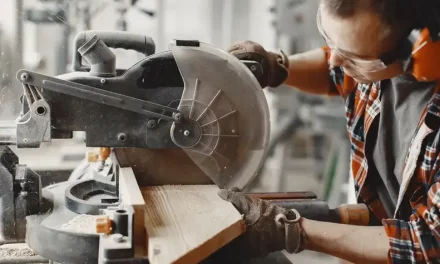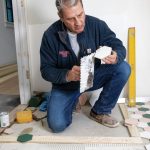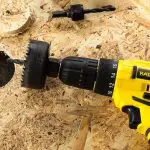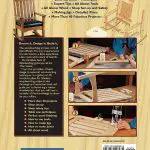To dry wood for woodworking, you can choose either the kiln drying method or air drying method, both of which have their own advantages and differences in moisture content. Kiln drying is a faster and more aggressive method, while air drying offers wood with less moisture but is a slower process.
Air Drying Wood
Air drying wood is an important step in preparing it for woodworking projects. To properly stack the wood, follow these guidelines. Start by choosing a dry, well-ventilated location for stacking the wood. Stack the wood in a way that allows air to circulate around each piece.
Use spacers, also known as stickers, to create gaps between the boards for improved air circulation. Make sure the stack is stable and won’t collapse. Cover the top of the stack with a tarp to protect it from rain while still allowing air to flow.
Check the moisture content regularly with a moisture meter to ensure the wood is drying properly. By following these guidelines, you can air dry wood effectively for your woodworking projects.
Kiln Drying
Drying wood for woodworking can be done in various ways. One method is kiln drying, which involves using a specialized chamber to remove moisture from the wood. Another option is drying in an oven, where the wood is placed in a controlled temperature environment.
Additionally, you can dry wood in an indoor room using fans or dehumidifiers to promote air circulation. Solar kilns are another alternative, harnessing the power of the sun to dry the wood. Each method has its advantages, such as faster drying time or preventing cracking.
By carefully selecting the right drying method for your woodworking project, you can ensure that the wood is properly dried and ready for use.
Alternative Drying Methods
Drying wood for woodworking can be done using alternative methods to avoid cracking. One method is using a dehumidifier wood kiln, which helps control moisture levels. With a dehumidifier wood kiln, it is important to keep the air moving to ensure proper drying without cracking the wood.
Another method is air drying, where the wood is stacked and stickered in a well-ventilated area, allowing natural air circulation to gradually remove the moisture. This method requires patience as it takes longer for the wood to dry compared to using a kiln.
However, air drying can be a cost-effective option for those with limited resources. No matter which method you choose, it is crucial to monitor the moisture content of the wood using a moisture meter to determine if it is dry enough for woodworking.
Frequently Asked Questions On How To Dry Wood For Woodworking?
How Do You Know If Wood Is Dry Enough For Woodworking?
To determine if the wood is dry enough for woodworking, follow these steps: 1. Check the moisture content using a moisture meter. 2. Ensure the wood has reached a moisture content of around 8-12%. 3. Look for signs of cracking or splitting, as this indicates the wood is drying.
4. Feel the wood’s surface – it should feel dry to the touch.
What Is The Best Method To Dry Wood?
The best methods to dry wood are through kiln drying or air drying. Kiln drying is a faster and more aggressive method, while air drying results in wood with slightly more moisture.
How Long Does It Take Wood To Dry For Woodworking?
Wood typically takes several weeks to several months to dry for woodworking, depending on the thickness and type of wood.
Conclusion
Drying wood for woodworking is an essential step in preparing the material for crafting. Whether you choose to air dry or kiln dry, both methods have their advantages and considerations. Air drying allows the wood to slowly lose moisture and is a more traditional approach, resulting in wood that retains its natural characteristics.
On the other hand, kiln drying is a faster and more aggressive method that reduces moisture content and minimizes the risk of mold or insects. Whichever method you opt for, proper stacking and ventilation are crucial for successful drying. Additionally, using stickers or spacers between wood layers helps promote airflow and prevents warping or sticking.
It’s important to remember that the drying process takes time and patience, but the end result is worth it – dry wood that is stable, easier to work with, and ready for your woodworking projects. So go ahead and start drying your wood, and let your creativity shine through in your woodworking endeavors.



















